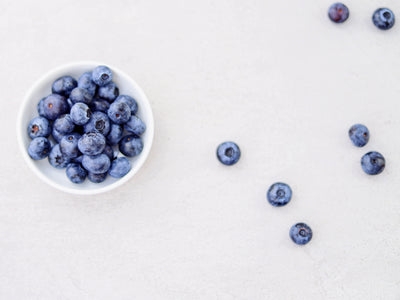How To Manage Endometriosis: The Natural Way

In our last article, we looked at what endometriosis is and revealed how it affects the lives of the 1 in 10 women who suffer from it.
Now, Conscious Spaces Founder, Tara, who has lived with this chronic condition for over 20 years, is sharing her personal suggestions on how to begin to manage its debilitating symptoms.
Conventional medicine is yet to find a way to ‘treat’ endo; mainly focusing on temporary symptom relief through surgery (the removal of endometrial tissue via a laparoscopy), hormonal therapies or prescription painkillers – which each come with their own undesirable risks and side effects, whilst simultaneously failing to address the root causes of the problem.
A hysterectomy is sometimes recommended as a last resort – as it was for Tara, who turned the offer down. Instead, Tara chose to take a natural approach, aiming to reduce inflammation, alleviate pain, balance hormones and support natural detoxification through diet, supplements and therapies. She even became a fully qualified Nutritional Therapist in the process, learning how to optimise energy and enhance immune function through diet for people suffering with chronic conditions like endometriosis.
Applying her new knowledge and understanding to her own life, Tara slowly but surely started to gain control over her condition; showing that even when things seem hopeless, there is still hope.
Read on to discover some of the things that helped Tara, and could help you too.
TARA'S TOP TIPS
Reduce internal inflammation
Studies clearly show a link between endometriosis and inflammation, (1) and so looking for easy ways to reduce inflammation in the body can be incredibly beneficial, particularly for pain management.
Start by avoiding poor quality fats such as those typically found in processed foods, cheap red meat and refined cooking oils (like vegetable oil). Instead, opt for organic, fresh, unprocessed and grass-fed options. Increasing your intake of omega 3 by eating lots of oily fish like wild-caught (as opposed to farmed) salmon as well as taking a high-quality fish oil supplement (or algae oil for vegans) can also be very helpful.
Raised blood sugar levels can contribute to inflammation, so keeping your blood sugar balanced may help with a vast array of symptoms. Avoid all refined white sugar and choose healthy, nutrient-dense alternatives to overly starchy food like white potatoes and grain-heavy meals.
Snack on nuts and seeds
If I do get peckish in between meals, to keep my blood sugar balanced, I usually snack on some activated nuts and seeds (activated means soaked, sprouted, dried). They’re much easier on the digestive system and make a really good source of protein - great for hormonal balance! Try to avoid Californian almonds or almonds that have been irradiated if you can, and always buy the best quality wherever possible.
Cut out gluten
A common recommendation made by respected endometriosis specialists is to cut out all sources of gluten from your diet. In one study of women with endo (2) who were put on a gluten free diet for a year, 75% reported a significant decrease in painful symptoms. It certainly worked wonders for me.
It can take time for dietary changes like this to take effect, so I would say to try it for at least 6 months, even if you see no immediate difference after 3 menstrual cycles. If you have bowel or digestive issues associated with or alongside your endometriosis, cutting out gluten is even more important.
Eat your greens
I generally eat a lot of leafy greens, but I always try to begin every day with a green juice. It usually contains a bit of celery, cucumber, an alternating range of greens, fresh ginger and turmeric for liver detoxification and occasionally a little bit of apple for taste (if you can, it’s best to avoid affecting blood sugar with fruits or root vegetables). Keep the greens as wild and organic as possible and always vary the type of greens so you get a wide range of nutrients. I follow this with a healthy breakfast that includes some good fats like coconut oil or avocado.
Start menstrual cycle tracking
Start tracking your monthly cycle so you can begin to identify your personal patterns and plan your life accordingly.
By working out when your equivalent spring, summer, autumn and winter fall within your cycle, you can start to recognise and respect the changes you go through. When do you feel full of new ideas? When do you just want to curl up, rest and go inward? Or how about the point where your energy peaks and you make headway on achieving your goals? By noticing all of this and keeping a journal of your moods, physical symptoms and emotions, it can help you to feel more in control of and in tune with your body, giving you more empowerment in dealing with your condition.
This can be transformative for all menstruating women, not just those who are affected by chronic gynecological issues like endometriosis. Author Maisie Hill’s book ‘Period Power’ is really brilliant on this subject; helping you to harness your hormones and get your cycle working for you, rather than the other way around.
Keep a food diary
Keeping a food diary can be really helpful when you’re trying to see what, if anything, triggers or makes your symptoms worse. Once you start jotting down what you’re eating, see how you’re feeling up to 72hours afterwards to see if you can see any sorts of patterns emerging.
You may well notice that certain foods like dairy or caffeine, for example, might be linked to certain symptoms you experience. For me, corn, coffee and dairy can all trigger issues with my endo and general wellbeing.
Incorporate some supplements
I’ve used supplements at different stages for different symptoms over the years, which have really helped me to stay on top of things. As a starting point, I would recommend considering incorporating the following into your diet:
- A good quality multi vitamin & mineral containing a decent amount of methylated B vitamins
- A magnesium supplement and/or magnesium bath salts
- NAC – short for N-acetylcysteine, a brilliant antioxidant you can buy in supplement capsule form
- A good quality omega 3 oil, which is invaluable in reducing inflammation
- Fresh ginger – again, amazing for reducing inflammation, as shown in this study (3)
- Fresh turmeric, or encapsulated high quality turmeric or curcumin - supports phase 2 detoxification of the liver, which is vital with hormonal issues
Try an infrared sauna
Using an infrared sauna works to oxygenate the body’s tissues, and can really help with detoxification pathways to reduce xenoestrogens (4) in women with endometriosis. Introducing an infrared sauna to my wellness routine helped me to heal in so many ways, from pain management to relaxation and stress relief.
Drink filtered water
It’s super important to hydrate with clean, filtered drinking water that is free from any contaminants or chemical pollutants. I always recommend investing in a thorough water filtration system to make sure you’re getting a pure supply.
Don’t be afraid to speak up
Endometriosis can be absolutely debilitating, and to increase awareness and understanding, more information and education is needed. Talk to your employer about how your condition might affect certain areas of work or times in the month. Why not print out or send your boss and colleagues information on endo? Spreading the word and being open about your illness will also give you greater confidence to speak up and ask for help when you really need it. There’s starting to be more visibility on this devastating issue; use it!
TARA’S GREEN JUICE RECIPE
Makes 1 carafe
2-inch piece fresh ginger
2-inch piece fresh turmeric
1 organic cucumber
1 small bunch organic celery
Good handful of organic greens e.g. kale, spinach
Half an apple for taste, if needed
Give all the ingredients a rinse first, then chop so that they fit easily in your juicer. Blitz until you have a beautifully vibrant green liquid, stir through with a spoon and then pour into your carafe for serving. Enjoy!
References
(1) https://www.ncbi.nlm.nih.gov/pubmed/27100482/
(2) https://www.ncbi.nlm.nih.gov/pubmed/23334113/
(3) https://www.ncbi.nlm.nih.gov/pmc/articles/PMC4436156/
(4) https://womeninbalance.org/2012/10/26/xenoestrogens-what-are-they-how-to-avoid-them/


























